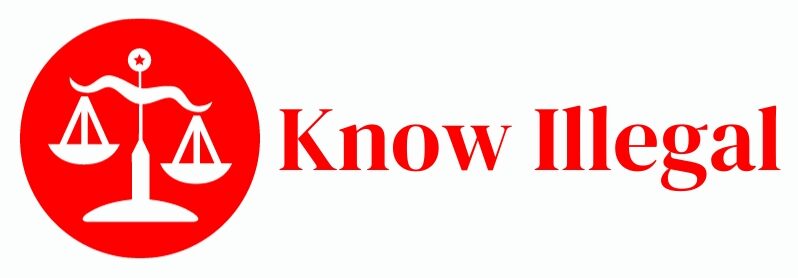Why Are Burn Barrels Illegal? Key Reasons Explained!!

Burn barrels, also known as backyard burning or open burning of waste, have long been a convenient way for many households to dispose of unwanted materials. However, the practice of using these metal drums to burn trash has come under increasing scrutiny and regulation due to significant environmental and health concerns. In many U.S. states and municipalities, burn barrels are now outright illegal or heavily restricted.
While burn barrels may seem like a simple solution for getting rid of yard waste, household garbage, or other combustible materials, the reality is that they pose serious risks to air quality, public health, and fire safety. This blog post will explore the key reasons why burn barrels have been banned or face strict regulations across much of the United States.
What are Burn Barrels?
A burn barrel is essentially a large metal drum, typically repurposed from a 55-gallon industrial drum, that is used for the open burning of waste materials. Historically, burn barrels were commonly used in rural areas without easy access to municipal waste disposal services.
Households would simply toss their trash, yard debris, and other combustible items into the barrel and set it ablaze – a convenient way to reduce the volume of waste that needed hauling away. However, the hazards of this uncontrolled burning have led many jurisdictions to crack down on burn barrel usage.
Air Pollution Hazards
One of the primary reasons burn barrels are illegal in many areas is due to the significant air pollution they generate. Burn barrels operate at relatively low temperatures, typically between 400-500°F, and with poor oxygen flow for complete combustion. This creates thick plumes of toxic smoke containing numerous hazardous pollutants:
- Particulate matter: Soot and microscopic particles that can enter the lungs and bloodstream, contributing to respiratory issues, heart disease, and cancer risks.
- Dioxins: Highly toxic compounds formed from burning chlorine-based materials like plastics. Dioxins are known carcinogens and can cause reproductive/developmental harm.
- Volatile organic compounds (VOCs): Gases like benzene, formaldehyde, and styrene that can cause eye/nose/throat irritation, headaches, nausea and are linked to cancer.
- Carbon monoxide: Odorless, poisonous gas that reduces oxygen delivery in the body.
- Nitrogen oxides: Significant contributors to smog and ground-level ozone.
- Heavy metals: Lead, mercury and other toxic metals released from burning batteries, electronics, and some treated woods.
The thick smoke produced by burn barrels does not disperse well and tends to linger close to the ground, putting those nearby at higher risk of exposure, especially children playing outdoors. Studies have found dioxin emissions from burn barrels can be over twice as high per pound of waste compared to municipal incinerators.
Fire Hazard Risks
In addition to generating toxic air pollution, burn barrels have a high potential to start uncontrolled wildfires, especially in dry or windy conditions. It only takes one errant spark or ember to ignite dry vegetation, spreading flames rapidly.
The barrels themselves can be fire hazards as they deteriorate over time. Thin metal can buckle, warp or simply burn through, causing the barrel to collapse and the fire to spread. Older, rusted barrels are particularly prone to structural failure.
For these fire safety reasons, many states and municipalities have blanket bans on burn barrels during summer wildfire seasons or periods of high fire danger. Areas prone to frequent wildfires often prohibit their usage entirely.
Legal Restrictions Across the U.S.
Recognizing the severe health and safety threats posed by burn barrels, an increasing number of states, counties and cities have enacted restrictions or outright bans on their usage in recent decades:
Statewide Bans
- In California, the burning of household waste is completely prohibited statewide, including in burn barrels.
- The states of New Hampshire, New Jersey also prohibit the residential burning of trash and have effectively banned burn barrels.
Restricted Areas
- Many other states like Alabama, Illinois, New York, and Pennsylvania allow some open burning but prohibit burn barrels in densely populated areas or within a certain distance from structures.
- For example, New York bans burn barrels in towns with populations over 20,000 unless an exemption is granted.
Permit Requirements
- Other states like Minnesota and Wisconsin require residential burn permits for any open burning, including in burn barrels.
- Permits may restrict what materials can be burned or dictate minimum distances from buildings.
Temporary Bans
- Even where ordinarily allowed, many fire-prone states frequently enact temporary bans on open burning and burn barrels during times of high wildfire danger.
The patchwork of regulations means residents need to check current local laws before attempting to use a burn barrel. However, the public health impacts have led the EPA and many clean air agencies to recommend residential burn barrel usage be completely prohibited.
Safer Alternatives to Burn Barrels
So what are the recommended alternatives to using burn barrels? The best approach is to reduce wasteful consumption and properly dispose of remaining materials through environmentally-responsible methods:
Reduce & Reuse
- Cut down on unnecessary single-use items and packaging waste
- Donate, sell or repurpose unwanted goods rather than trashing them
Recycle
- Recycle paper, cardboard, plastics, glass, and metals through curbside collection programs or recycling drop-offs.
Compost
- Set up a backyard compost bin for yard debris and food scraps instead of burning.
Municipal Services
- For remaining general waste, use proper municipal trash/garbage collection services in your area.
If you do want to have the occasional recreational fire, using a metal or stone fire pit with aired vents is a much safer option than an enclosed burn barrel. Only burn untreated wood, brush trimmings or other dry vegetative matter.
Ultimately, while burn barrels were once a common sight across rural America, increased awareness of their pollution impacts and fire risks have led them to be heavily regulated or outright banned across most of the United States today.
Conclusion
Burn barrels may seem like a convenient way to dispose of yard waste and trash, but the environmental and health hazards they pose are too severe to ignore. The thick, toxic smoke laden with particulates, dioxins, and heavy metals degrades air quality and puts nearby residents at risk of respiratory issues, cancer, and other illnesses.
The threat of wildfire spread, particularly in dry or windy conditions, is another major safety concern that has led many areas prone to wildfires to prohibit burn barrel usage entirely. Even in areas where they are still permitted, an increasing number of rules and regulations aim to minimize their usage and impacts.
Thankfully, there are better alternatives available today – from reducing overall waste, to recycling and composting programs, to using municipal trash services. For the occasional recreational fire, contained fire pits are a much safer option than old-fashioned burn barrels.
As awareness of burn barrel hazards grows, it’s likely even more states and communities will move to restrict or ban them in the years ahead. The convenience of backyard burning simply cannot justify the risks to public health, safety and environmental quality.







I get it – hauling trash yourself without a burn barrel is more work. But creating all that toxic smoke just to be a little lazier? Prioritize your health and neighbors over a tiny convenience.
You make an excellent point. While using a burn barrel is more convenient than hauling waste, the health impacts on yourself and neighbors from the hazardous air pollution really isn’t worth that minor benefit. Taking some extra time for responsible disposal is a small price for preserving air quality.
I’ve heard some people still use burn barrels in secret to get around local bans. I hope this post convinces them of the pollution and safety risks – it’s just not worth it when there are better options!
It’s unfortunate but not surprising that some people try to get around local burn barrel bans by using them covertly. Hopefully posts like this do help make more people aware of the very real air quality and fire safety hazards – risking fines and hazards isn’t worth it when better disposal methods exist.